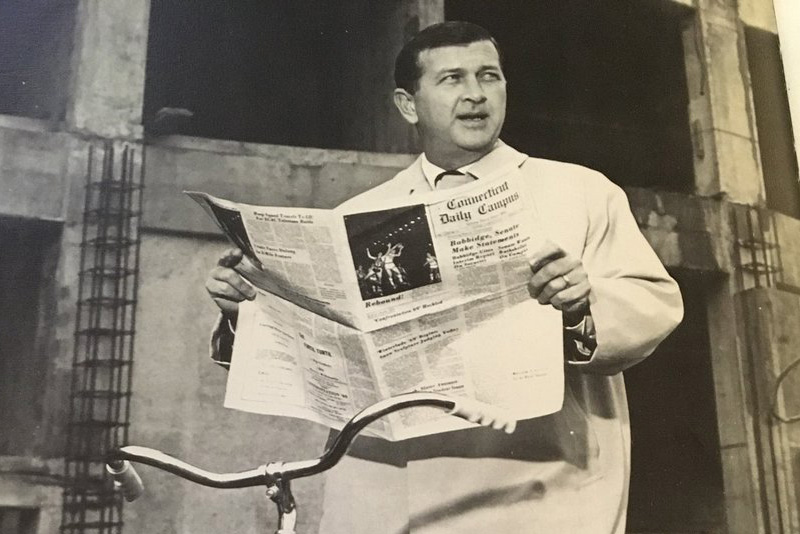Serving as UConn’s president from 1962 to 1972, Homer Babbidge – who lends his name to the University’s main library building in Storrs – was among the most transformative leaders in the institution’s history.
Under Babbidge, the size of the faculty doubled, the number of volumes in the library went from 400,000 to over 1 million, the University opened a campus at Avery Point, more than a dozen new academic departments and programs were created, and the Honors Program, UConn Foundation, and Benton Museum of Art were all established.
Popular with students – his birthday was informally celebrated on campus every year as “Homer Babbidge Day” – he presided over the University during the turbulent years of the late 1960s and early 1970s, when protests and building occupations became regular features of campus life. He also fought a losing battle against the establishment of tuition, which was sought by state politicians critical of the campus protests.
After stepping down in 1972, he returned to Yale University as Master of Timothy Dwight College, a post he had occupied before coming to UConn.
In this excerpt from the May 30 episode of the UConn360 podcast, Tom Breen ’00, Julie Bartucca ’10, and Ken Best look back on Babbidge’s time at UConn and the legacy he left.
For the full podcast and other episodes, visit uconn.edu/uconn360-podcast.



